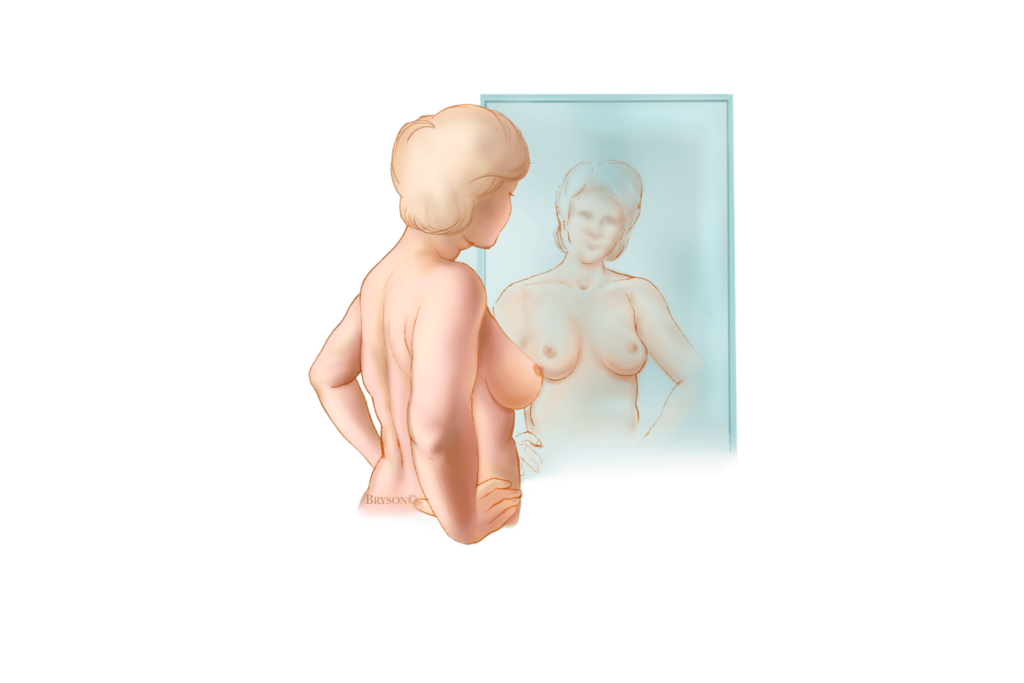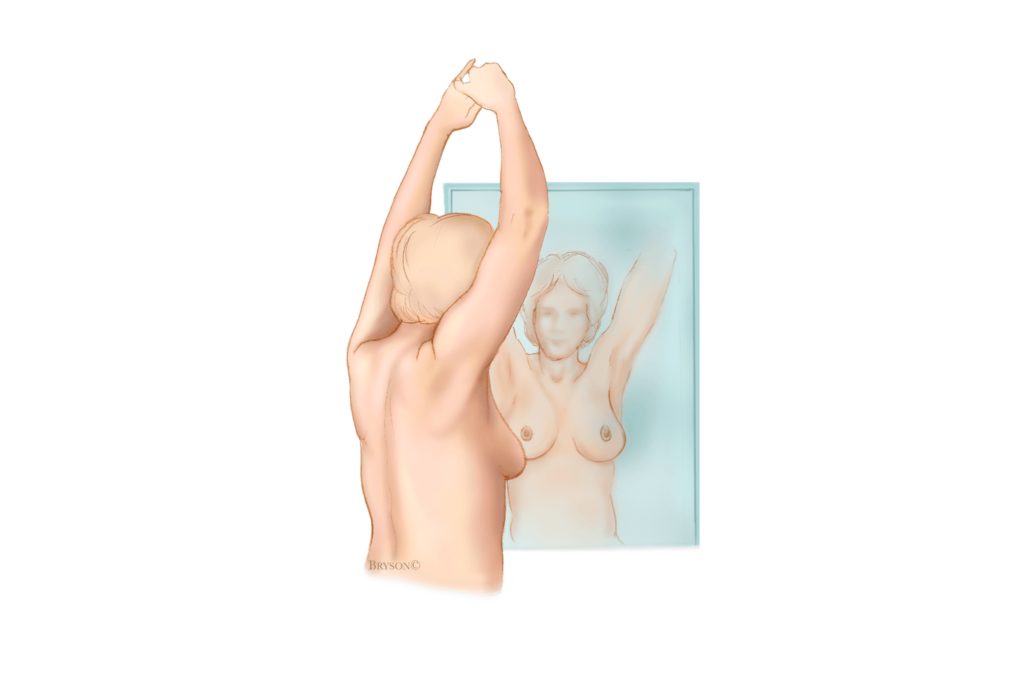Self breast examinations are easy techniques to check for lumps and other symptoms of breast cancer that can be done at home. Over the years, there have been arguments on the relevance of self breast exams as a tool for the diagnosis of breast cancer. However, it is generally agreed that it is very useful in helping you know about your breasts and consequently notice any changes as soon as possible.
When should you do a self breast exam?
Generally, you may want to carry out a self breast exam once in a month, three to five days after the start of your menstrual period. If your menses are not regular, it is advisable to carry out the procedure at the same time every month.
Steps to perform a self breast exam
Step 1: Examine your breasts in a mirror
You should begin by looking at yourself in the mirror with your shoulders straight and your hands on your hips. At this stage, you are looking out for changes in the size, shape or appearance of your breasts.

You should also check for:
- Dimpling, puckering or budging of the skin
- Change in nipple position or an inverted nipple
- Redness, soreness, rash or swelling.
Step 2: Raise your arms and examine your breasts

Now raise your arms and look out for the same changes as in step 1.
Step 3: Check for fluids
While still at the mirror, gently squeeze your nipples to check for any sign of fluid discharge (this could be watery, milky, yellowish or blood).
Step 4: Feel for lumps while lying down
Now, it is time to check for breast lumps and other abnormalities while lying down.

- Lie down with one arm behind your head and use the opposite hand to feel the breast.
- Use a firm, smooth touch with the first few finger pads of your hands, keeping them (the fingers) flat and together. Press down with these fingers and move them in a circular pattern, about the size of an inch round.
- Cover the entire breast from top to bottom and side to side (from your collarbone to the top of your abdomen and from your armpit to your cleavage).
- Apply different levels of pressure: light pressure for skin and tissue just beneath the breasts; medium pressure for the tissue in the middle of the breasts and firm pressure for the deep tissue in the back. You should be able to feel your ribcage when you have reached the deep tissue.
Step 5: Feel your breasts for lumps while standing or sitting
Finally, feel for breasts for lumps while standing or sitting, using the same hand movements and covering the entire breasts, just as you did in Step 4. Many women feel their breasts more easily when their skin is wet or slippery. So they tend to prefer doing this step in the shower.

What should you do if you feel a lump?
Feeling a lump in your breasts does not necessarily call for worry. This is because most women have some lumps and lumpy areas in their breasts – which are often non-cancerous. However, you should see your doctor immediately if you notice a lump that is new and/or becoming worrisome.
Remember to subscribe to our newsletter for more updates from us!









